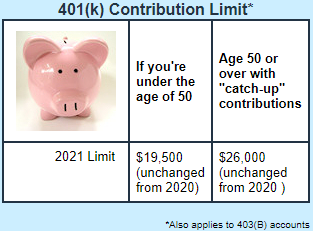Follow Sensible Guidelines When Borrowing From Your 401(k)
If you need cash for an emergency, you might turn to your 401(k) plan. When you take a loan from a plan, you borrow money from your own account, pay yourself back with interest and continue making contributions at the same time.

Assuming your 401(k) plan permits such loans, here are three general guidelines:
- You can borrow up to the lesser of $50,000 or half of your vested benefits. For example, if you have $80,000 in vested benefits in your 401(k) account, your loan amount is limited to $40,000.
- Loans are generally permitted for any purpose, though some plans limit borrowing to items such as a home purchase, college education or medical expenses.
- You have to repay the entire amount within five years. (However, if you’re borrowing to buy a principal residence, you can repay over a longer period.) Most plans require payments to be taken directly out of your paycheck. If you don’t repay the loan on time, taxes and penalties apply.
Of course, there are other requirements for 401(k) loans. Significantly, the plan provisions for loans cannot discriminate in favor of the top brass and the loan must include a reasonable rate of interest. There are several advantages to 401(k) loans. You can usually get the money quickly because a credit check isn’t done. And interest rates are often competitive.
Key point: You don’t want to tap your retirement plan unless you absolutely have to. Compare any loan from your plan with other sources of borrowing and calculate the loan’s long-term impact on your retirement fund. Keep in mind that some plans may charge fees.
As a last resort, borrowing beats withdrawing money from your 401(k) plan because withdrawals are subject to ordinary income tax and may be subject to a 10% penalty if you‘re under age 59 1/2. By borrowing, you avoid this penalty, plus you’re paying interest to your own account — rather than a bank or other lender.

